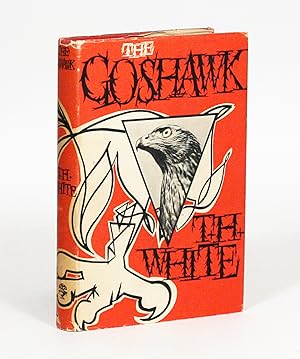About this Item
FIRST EDITION, INSCRIBED BY WHITE: PERHAPS THE BEST POSSIBLE ASSOCIATION COPY, WITH A WARM AND LENGTHY INSCRIPTION TO HIS GOOD FRIEND SYDNEY COCKERELL - CONNOISEUR, BIBLIOPHILE, AND DIRECTOR OF THE FITZWILLIAM MUSEUM. T.H. White is best known for his magnificent re-telling of the Arthurian saga in his Once and Future King tetralogy - The Sword in the Stone, The Queen of Air and Darkness, The Ill-Made Knight, and The Candle in the Wind. His life - as described by his biographer Sylvia Warner Townsend, and more recently in Helen Macdonald's prize-winning memoir H is for Hawk - was a sad one. He was a heavy drinker, pathologically fearful, estranged from humanity, emotionally crippled by a turbulent upbringing, troubled by dark sado-masochistic fantasies, and isolated, in a homophobic era, by his (likely) homosexuality. As an adult, he attempted to exorcise his demons through psychoanalysis; by attempting to model himself on Sir Lancelot, "whose character White made his own" ("Lancelot was a sadist who refrained from hurting people through his sense of honour. White always took great pains to be gentle precisely because he wanted to be cruel"); and by his efforts to train a hawk, described in the book offered here. (MacDonald). "All those elements of himself that he'd pushed away, his sexuality, his desire for cruelty, for mastery: all these were suddenly there in the figure of the hawk. He would train it. He would teach the hawk, and he would teach himself, and he would write a book about it and teach his readers this doomed and ancient art. It was as if he were holding aloft the flag of some long-defeated country to which he staked his allegiance. He'd train his hawk in the ruins of his former life. And then when the war came, as it surely would, and everything around him crumbled into ruin and anarchy, White would fly his goshawk. far from the bitter, sexual confusion of the metropolis or the small wars of the schoolroom" (Macdonald). The project did not go well - the goshawk escaped - and White abandoned his plans to publish an account of the training. However, years later a publisher saw the manuscript and asked White if he could publish it. The Goshawk finally appeared in 1951. On White's relationship to Sydney Cockerell: One of the bright spots that punctuated White's gloomy life was his warm friendship with Sydney Cockerell, who was, in the words of Noel Perrin, "one of the few human beings the author of The Once and Future King had much use for." Cockerell was a connoisseur, a bibliophile, and the Director of the Fitzwilliam Museum, of which he famously said, "I found it a pigsty; I turned it into a palace." "The collections and buildings were not just rearranged but much augmented. [and] his success was recognized by the award of an honorary LittD in 1930. [and] he was knighted in 1934" (Dictionary of National Biography). White and Cockerell first encountered each other - if that is the right word - anonymously and at a distance. In a November 1944 letter, White recalled the incident to Cockerell: "Shall I startle you into answering by confessing something which has been on my conscience for eighteen years? Cast your mind back to the extension of the Fitzwilliam Museum, and you will probably remember that the 'Cambridge Correspondent' of the then Saturday Review made some nasty remarks about the pilasters of your godchild. You crushed that correspondent by some excellent replies in which you cruelly referred to him as 'he or she' and he or she made exit crawling backwards mumbling. He or she was me." Whether or not Cockerell ever knew the "Cambridge Correspondent's" identity until White spilled the beans in 1944, the two later met face to face in Siegfried Sassoon's home. Cockerell "discerned a character he would like to add to his collection of acquaintances, and invited him for a visit to Kew. . In the course of his visit, White was asked to wash his hands; when he had done so he was allowed to examine his host's trea.
Seller Inventory # 2163
Contact seller
Report this item




